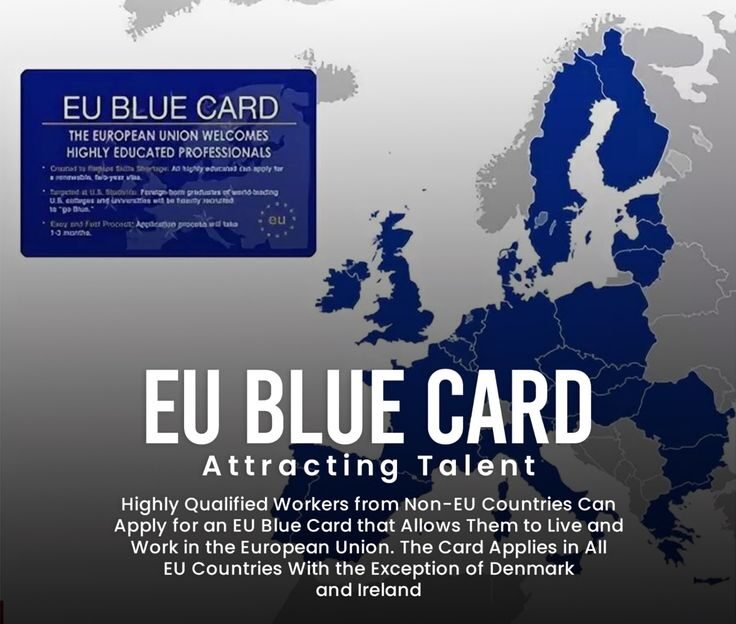The United States has long been recognized as a land of opportunity—and obtaining an employment‐based green card is one of the most definitive steps toward realizing the American dream. In today’s competitive global market, the various EB (Employment-Based) categories help streamline the process for individuals with exceptional skills, advanced degrees, or even innovative investment strategies. This article offers an in-depth discussion of the EB categories, with clear explanations of eligibility requirements, benefits, challenges, and practical tips, along with internationally relevant tables and a few seamlessly integrated topics such as USA Family-Based Immigration Green Cards for context.
Introduction to the EB Categories
The U.S. employment‐based immigration program is divided into several categories, known collectively as the EB categories. Each category is designed to assess an applicant’s eligibility based on factors such as expertise, education, and even entrepreneurial spirit. Whether you are an individual with extraordinary ability in the sciences or someone possessing a solid academic background, there is an EB category that could align with your profile.
Results
#1. What is your current employment status?
#2. What is your preferred work location?
#3. What is your highest completed level of education?
#4. What is your gender?
#5. What type of work are you most interested in?
#6. Which continent are you currently living in?
Before diving into each category, it is important to understand that the green card process through employment involves a variety of documentation, labor certification steps, and, in many cases, sponsorship by a U.S. employer. This process is not only a pathway to permanent residency but also a way to demonstrate your abilities on a global scale. For a broader perspective on sponsorship avenues, consider reading USA Family-Based Immigration Green Cards, which shows parallel processes in family-based immigration.
Overview of Employment-Based Green Cards
The Employment-Based (EB) green card system is divided into five primary categories:
- EB-1: Priority workers, including persons with extraordinary ability, outstanding professors, and researchers.
- EB-2: Professionals with advanced degrees or exceptional abilities.
- EB-3: Skilled workers, professionals, and other workers.
- EB-4: Special immigrants, which include religious workers and other special categories.
- EB-5: Immigrant investors who create new jobs in the United States.
Each category presents its own set of standards and benefits—ranging from expedited processing to the possibility of bypassing labor certification if the applicant qualifies under extraordinary ability or national interest waiver provisions. In this competitive arena, employers and immigrants alike benefit from clearly defined criteria that help streamline the process. For more detailed industry information, check out Companies Known for Sponsoring Visas in the UK Tech Sector as an example of how businesses invest in attracting top talent.
EB-1: Priority Workers for Extraordinary Ability
The EB-1 category is reserved for individuals who are truly exceptional. This group includes people with a demonstrated record of extraordinary achievement in their fields—whether through research, arts, education, or business. Applicants must provide extensive documentation that evidences their success and sustained acclaim. Some key advantages of this category include:
- No Labor Certification Requirement: Many EB-1 applicants bypass the labor certification process, making the pathway faster.
- High Priority Processing: Due to the exceptional nature of these applicants, processing times are often shorter.
- Global Recognition: Achievements and awards recognized internationally bolster a successful EB-1 application.
For those in technology and research fields, obtaining sponsorship might resemble the way Companies Known for Sponsoring Visas in the UK Tech Sector actively seek to recruit top talent, demonstrating a clear parallel to what U.S. employers demand in EB-1 candidates.
EB-2: Advanced Degrees and Exceptional Abilities
EB-2 is the category for applicants holding an advanced degree or possessing exceptional abilities in the sciences, arts, or business. Typical requirements under this category include:
- Advanced Academic Credentials: A master’s degree or higher, or a foreign equivalent.
- Exceptional Ability: Alternatively, a level of expertise significantly above that ordinarily encountered in the field.
- Labor Certification and National Interest Waiver (NIW): In some cases, applicants may seek a waiver if they can demonstrate that their work substantially benefits the national interest of the United States.
The EB-2 category attracts professionals from diverse fields, including medicine, engineering, and research. This level of expertise is sometimes mirrored in other sponsorship schemes abroad; for instance, professionals might compare their journey with guidelines in Australia Subclass 482 (TSS) Visa: Temporary Skill Shortage Guide, which similarly values specialized skill sets.
EB-3: Skilled Workers, Professionals, and Other Workers
The EB-3 category is designed to cater to skilled workers, professionals with a bachelor’s degree, and other workers performing unskilled labor that requires less than two years of training or experience. Although this category generally experiences longer waiting periods compared to EB-1 or EB-2, it remains a viable route for many applicants seeking permanent residency through consistent employment.
Key Features of EB-3
- Labor Certification Requirement: Most EB-3 applications require a labor certification to ensure that no qualified U.S. workers are displaced.
- Broad Applicability: Ideal for a wide array of occupations in sectors such as healthcare, engineering, and hospitality.
- Family Benefits: The process offers a pathway for family members, ensuring that spouses and children can benefit from the applicant’s new status.
For a related insight into international opportunities that mirror certain aspects of EB-3, consider Nursing Opportunities in New Zealand for Foreign Nurses + Visa Info—a resource that highlights the migration pathways available to skilled workers in high-demand fields.
EB-4: Special Immigrants
The EB-4 category is unique among employment-based immigration options because it encompasses individuals who do not fit the typical professional or skilled worker profile. It includes special immigrants such as religious workers, broadcasters, and certain employees of U.S. foreign service posts. Applicants under EB-4 benefit from a process tailored for individuals who contribute to cultural and religious diversity within the United States.
Highlights of EB-4
- Diverse Range of Candidates: This category includes religious workers, translators, and others with specialized roles.
- Fewer Applicants: With lower overall numbers compared to other EB categories, EB-4 applications are often processed more efficiently.
- Unique Contribution: Applicants demonstrate how their work enriches American society, particularly in cultural and social dimensions.
Candidates in this category may find similarities in processes for family sponsorship. An example is Family Reunification Visas in Germany, which also emphasizes the significance of maintaining familial and community bonds through migration.
EB-5: Immigrant Investor Program
The EB-5 category is reserved for individuals who invest substantial capital into the U.S. economy and create new employment opportunities. This pathway is designed not only to stimulate economic growth but also to provide a streamlined method for investors to obtain permanent residency.
Critical Elements of EB-5
- Investment Requirements: Generally requires a minimum investment of USD 900,000 to USD 1.8 million depending on whether the investment is made in a targeted employment area.
- Job Creation Mandate: The investment must lead to the creation of at least 10 full-time jobs for U.S. workers.
- Direct or Regional Center Investment: Applicants can choose between a direct investment in a business or invest through a designated regional center.
For individuals exploring investment-based immigration, similar insights can be garnered from New Zealand Green List: Fast-Track Residency for Skilled Workers, which outlines rapid pathways for immigrants meeting specific economic criteria.
Navigating the EB Categories: Tips and Best Practices
While the EB categories offer a clear framework for evaluating eligibility, the pathway to securing an employment-based green card is multifaceted. Here are some general tips for applicants:
- Preparation and Documentation: Gather all academic records, professional awards, letters of recommendation, and any evidence of international recognition well in advance.
- Consult with Experts: Immigration attorneys and experienced recruiters can provide tailored advice that considers both U.S. immigration policy and international employment trends.
- Consider Your Long-Term Goals: Evaluate how each EB category aligns with your career aspirations and family needs.
- Stay Updated on Policy Changes: U.S. immigration regulations evolve, and being aware of new rulings, processing timelines, and policy adjustments is crucial.
An international perspective on recruitment strategies can be seen in resources like Teaching Jobs in the UAE (Dubai/Abu Dhabi) with Sponsorship Packages, which highlight how sponsorship and recruitment practices impact global talent mobility.
In-Depth Analysis: Comparing EB Categories
Each EB category has distinct advantages and limitations. Let’s take a closer look at how these categories compare, focusing on eligibility, processing times, and long-term benefits.
Eligibility
- EB-1 applicants are typically required to demonstrate extraordinary ability or have a significant record of international acclaim.
- EB-2 applicants must hold an advanced degree or show exceptional ability in their field.
- EB-3 is more inclusive, covering skilled workers and professionals who do not necessarily hold advanced degrees.
- EB-4 and EB-5 serve niche groups that either contribute in specialized roles or invest significantly in the U.S. economy.
Processing Times
- EB-1 applicants often experience shorter processing times due to priority treatment.
- EB-2 and EB-3 may face longer backlogs, particularly for countries with high demand.
- EB-4 applicants benefit from lower numbers, thereby sometimes avoiding the lengthy queues seen in the EB-2 and EB-3 categories.
- EB-5 processing can vary widely based on the type of investment and regional center demands.
For those in high-demand sectors, understanding these timelines is crucial. A relevant resource to note is Australia Subclass 482 (TSS) Visa: Temporary Skill Shortage Guide, which outlines similar challenges in aligning skill shortages with immigration requirements.
Tables of International Opportunities and Sponsorship Options
In the middle of this discussion, below are three tables that encapsulate several international opportunities and visa sponsorship options drawn from our topics list. These tables provide helpful snapshots, including job-related opportunities with salary expectations and non-job-related opportunities such as scholarships and family sponsorships.
Table 1. International Job Opportunities with Visa Sponsorship
| Job Position | Salary Expectation (USD) |
|---|---|
| Chef Positions in Australia: Visa Sponsorship for Culinary Professionals | $50,000–$70,000 |
| Truck Driver Jobs in Australia: Visa Sponsorship & Licensing | $40,000–$60,000 |
| Warehouse Operative Jobs in Germany with Visa Assistance | $30,000–$40,000 |
| Retail Management Jobs in Canada for Immigrants with Sponsorship | $50,000–$80,000 |
Table 2. Additional Job Categories with Sponsorship
| Job Position | Salary Expectation (USD) |
|---|---|
| Early Childhood Educator Jobs in Australia with Visa Sponsorship | $45,000–$65,000 |
| Entry-Level Jobs in the UK with Visa Sponsorship for Recent Graduates | $30,000–$45,000 |
| Skilled Trades Apprenticeships in Australia with Visa Pathways | $40,000–$55,000 |
Table 3. Scholarships and Family Sponsorship Opportunities
| Opportunity | Details |
|---|---|
| USA University Scholarships for International Undergraduates | Scholarships aimed at enabling access to U.S. higher education |
| Government Scholarships in Europe | Funding opportunities for international study and research in Europe |
| Canada Family Sponsorship Program | Immigration support for reuniting family members |
These tables serve as a handy reference for readers who seek additional context on international recruitment and sponsorship options. They bridge the discussion on EB categories with broader trends in global employment mobility.
EB Categories in Practice: Case Studies and Real-World Experiences
To further illustrate how the EB categories function in practice, consider several case studies that highlight the different applicant profiles across each category.
EB-1 in Action
Consider an internationally acclaimed researcher who has published groundbreaking studies and received awards for innovation. After obtaining a strong portfolio that documents extraordinary achievement, the researcher applies under the EB-1 category. The streamlined process, which omits the labor certification phase, results in a favorable adjudication—even as processing times for other categories lag behind. In a similar vein, global recruitment practices such as those found in Companies Known for Sponsoring Visas in the UK Tech Sector demonstrate that extraordinary talent receives preferential treatment worldwide.
EB-2: The Professional Journey
Now imagine a medical professional holding an advanced degree who is recognized for exceptional clinical research. Their application under EB-2 is bolstered by advanced credentials and detailed evidence of their impact on public health. Even though a labor certification may be required, the process remains efficient due to the high value of their contributions. A comparable pathway can be seen in Australia Subclass 482 (TSS) Visa: Temporary Skill Shortage Guide, where highly skilled workers are fast-tracked for temporary visas that pave the way for permanent opportunities.
EB-3: Skilled Worker Success
A skilled engineer who holds a bachelor’s degree and several years of industry experience finds that the EB-3 category aligns well with their professional profile. Despite longer processing times, the EB-3 route remains attractive due to its broad eligibility criteria. This approach mirrors the diversity in visa requirements seen in global markets, much like Nursing Opportunities in New Zealand for Foreign Nurses + Visa Info, where eligibility is based on professional qualifications and experience.
EB-4 and EB-5: Unique Pathways
For individuals who do not fit the traditional professional mold, EB-4 and EB-5 offer alternative pathways. EB-4 often appeals to special immigrant groups such as religious workers or those in international service roles—providing an opportunity to contribute culturally while securing permanent residency. EB-5, on the other hand, is ideal for those able to make a significant financial investment that creates jobs and fuels economic growth. Parallel initiatives, such as New Zealand Green List: Fast-Track Residency for Skilled Workers, further illustrate the role of investment in streamlining immigration pathways.
Each real-world example underscores that there is no “one size fits all” approach in U.S. employment-based immigration. Instead, the EB categories offer tailored pathways that accommodate a diverse range of applicants.
Challenges and Strategies in the Green Card Process
While the EB categories provide structured pathways to obtaining a U.S. green card, applicants must overcome several challenges:
- Complex Documentation Requirements: The process demands extensive paperwork, including evidence of professional achievements, academic qualifications, and sometimes detailed employer attestations.
- Stringent Eligibility Criteria: Even slight gaps in documentation or failure to meet specific thresholds can lead to denial.
- Lengthy Processing Times for Certain Categories: Particularly for EB-2 and EB-3, waiting periods may be prolonged due to high demand.
- Changing Immigration Policies: Regulatory shifts can alter eligibility standards or processing timelines unexpectedly.
To mitigate these challenges, applicants should closely monitor policy updates and work with experienced immigration attorneys. It’s also useful to network with former EB applicants and attend industry seminars to stay ahead of any changes in the process. For those seeking parallels in educational migration pathways, insights can be gleaned from Teaching Jobs in the UAE (Dubai/Abu Dhabi) with Sponsorship Packages, which is frequently updated with the latest sponsorship information.
Employer’s Role in the EB Process
Employers play a critical role in the U.S. green card process. Their responsibilities include:
- Filing Labor Certification Applications: For many EB categories, employers must demonstrate that there is a lack of qualified U.S. workers for the position.
- Providing Detailed Job Descriptions and Qualifications: This helps immigration authorities validate the eligibility of the applicant.
- Supporting Applicants with Documentation: Employers may be required to supply letters of intent, proof of business operations, and evidence of financial stability.
- Monitoring Immigration Policy Changes: Staying informed about policy revisions ensures timely and compliant submissions.
Successful employer-sponsored applications reflect not only the company’s commitment to innovation and global competitiveness but also an understanding of best practices. Much like how international companies invest in diverse talent recruitment, as exemplified by Companies Known for Sponsoring Visas in the UK Tech Sector, U.S. employers must remain proactive and informed.
Comparative Insights: EB Green Card Categories Versus Other Global Schemes
When comparing the U.S. EB categories with similar international immigration schemes, several key differences emerge:
- Emphasis on Employer Sponsorship: Unlike some other countries that rely primarily on points-based systems, the U.S. heavily emphasizes employer sponsorship for most employment-based visas.
- Diversity of Categories: The United States provides a wide range of EB options—from extraordinary abilities to investment-based schemes—offering more personalized pathways.
- Regulatory Scrutiny and Documentation: U.S. immigration authorities place significant weight on comprehensive documentation and adherence to strict guidelines.
- Economic and Employment Impact: Many other nations adopt policies geared toward labor market needs and economic contributions, a focus that is deeply embedded in the U.S. EB program as well.
These differences underline the necessity for applicants to be strategic in selecting the EB category that best aligns with their qualifications. In addition, similar challenges in aligning skills with immigration requirements can be found in other nations. For instance, the guidance in Early Childhood Educator Jobs in Australia with Visa Sponsorship reveals that robust documentation and employer support are essential components of any successful migration plan.
Practical Tips for a Successful Application
For those preparing to navigate the complex labyrinth of the U.S. employment-based green card process, here are some strategies to enhance the likelihood of success:
- Start Early: Begin gathering supporting documents—including letters of recommendation, performance awards, and certification proofs—well in advance.
- Seek Professional Guidance: Consult with immigration professionals who are updated on the latest regulatory changes.
- Tailor Your Application: Customize your application to highlight experiences and skills that align with the specific EB category for which you are applying.
- Maintain a Comprehensive Record: A detailed portfolio of achievements and continuous professional development can be invaluable.
- Monitor Policy Updates: Immigration policies are subject to change; following reputable resources such as Post-Graduation Work Permit (PGWP) in Canada can help you stay informed.
These steps not only ease the documentation process but also ensure that your application is robust enough to meet the rigorous demands of U.S. immigration authorities.
Future Trends and Policy Impacts
As the global marketplace evolves, so too do immigration policies. Several trends are emerging that might impact the future of employment-based green card processes:
- Increasing Emphasis on Digital Documentation: U.S. Citizenship and Immigration Services (USCIS) is moving towards a more digital and paperless process, which could simplify the submission and review of applications.
- Enhanced Scrutiny on Labor Certification: With a growing number of applications, agencies are expected to tighten requirements to ensure that U.S. workers are not adversely affected.
- Broader Acceptance of International Qualifications: In response to globalization, there is an increasing trend toward recognizing foreign degrees and qualifications, which may reduce waiting times in categories like EB-2 and EB-3.
- Economic Focus on Investment-Based Immigration: The success of the EB-5 program could lead to policy adjustments that further incentivize foreign investment.
For professionals and investors eyeing future opportunities in U.S. immigration, understanding these evolving trends is vital. Comparative perspectives can be drawn from similar initiatives around the world, such as No IELTS Required Jobs in Canada with Visa Sponsorship, where policy evolution is also evident.
Integrating Global Perspectives into the U.S. Green Card Process
The U.S. employment-based green card system remains one of the most sought-after immigration pathways. However, it is essential to note that similar processes exist globally, creating an environment where competitive migration is increasingly common. For instance, while an applicant navigates the EB categories in the United States, parallel pathways such as Teaching Jobs in the UAE (Dubai/Abu Dhabi) with Sponsorship Packages not only highlight the diversity of international opportunities but also underscore the importance of cross-border employment strategies.
In today’s interconnected world, understanding international job opportunities and migration pathways can help applicants build a competitive profile. Whether planning a career in the United States or exploring opportunities abroad, it’s crucial to weigh factors such as salary expectations, growth prospects, and regulatory environments. The comprehensive tables presented earlier provide a snapshot of these opportunities, serving as a valuable resource for decision-makers.
Expert Opinions and Industry Insights
Leading immigration attorneys and industry experts emphasize that a well-prepared application, combined with strong employer support, is critical for a successful EB petition. These experts suggest that building a narrative around your career achievements and aligning your professional background with the requirements of the specific EB category can significantly boost your chances of success.
For example, experts in the field recommend that prospective applicants invest time in understanding not only the technical requirements but also the practical implications of long-term residency in the United States. Looking abroad, one might compare this to the preparation involved in sectors such as Skilled Trades Apprenticeships in Australia with Visa Pathways—a process that similarly benefits from detailed documentation and employer-backed endorsements.
A Comparative Discussion: U.S. EB Categories Versus Other Immigration Avenues
When evaluating the U.S. employment-based green card process against similar immigration avenues in other countries, several factors come into focus:
- Flexibility of Application: The U.S. system offers multiple categories to match a wide range of qualifications. This flexibility is an advantage over more rigid points-based systems.
- Employer Influence: U.S. immigration law is uniquely centered around employer sponsorship, which can benefit highly specialized talent but may also create bottlenecks.
- Processing Efficiency: The sheer volume of applications in categories like EB-2 and EB-3 often leads to extended waiting times, a challenge also noted in comparable systems worldwide.
- Economic and Social Integration: U.S. green card holders gain access to a broad array of benefits, including social security, healthcare, and an avenue to citizenship—a comprehensive package that is attractive on the global stage.
For further insight into how various countries streamline their immigration processes, one could explore Family Reunification Visas in Germany—a program that, like the U.S. system, places a premium on legal eligibility, robust documentation, and clear familial support structures.
Conclusion and Future Outlook
The journey to obtain an employment-based green card in the United States is complex, demanding, and ultimately rewarding. From the extraordinary ability recognized under EB-1 to the investment-driven pathway of EB-5, each category offers its unique advantages tailored to diverse profiles and professional experiences. Continuous changes in immigration policy, international economic trends, and employment landscapes underscore the importance of staying informed and seeking expert advice.
🎓 Must Read
With a comprehensive understanding of the EB categories, you are better equipped to choose the pathway that best fits your unique qualifications. As the global migration environment continues to evolve, so too will the requirements, offering both challenges and opportunities. Whether you are a highly skilled professional or an entrepreneur ready to make a substantial investment, the U.S. green card process remains one of the most promising routes toward building a future in one of the world’s most dynamic economies.
For aspiring applicants or employers, staying current with policy updates and leveraging comprehensive resources—such as Post-Graduation Work Permit (PGWP) in Canada—can provide invaluable guidance. The international job tables and sponsorship data presented here also serve to remind us of the interconnected nature of today’s employment markets and the myriad opportunities available across borders.
Final Thoughts
Securing a USA employment-based green card requires not only excellence in your professional field but also a carefully documented and strategic approach. We hope this detailed analysis of the EB categories, complemented by relevant international opportunities and external resource links, helps demystify the process and inspires confidence in your application.
Embark on your journey with the assurance that while the process may be demanding, the benefits and opportunities that come with permanent residency in the United States far outweigh the challenges. By leveraging expert advice, staying updated on policies, and understanding both domestic and international migration trends, you can position yourself for success in one of the world’s most competitive immigration systems.









